Connections of Land, Sea and Sky: Olympic Discovery Trail
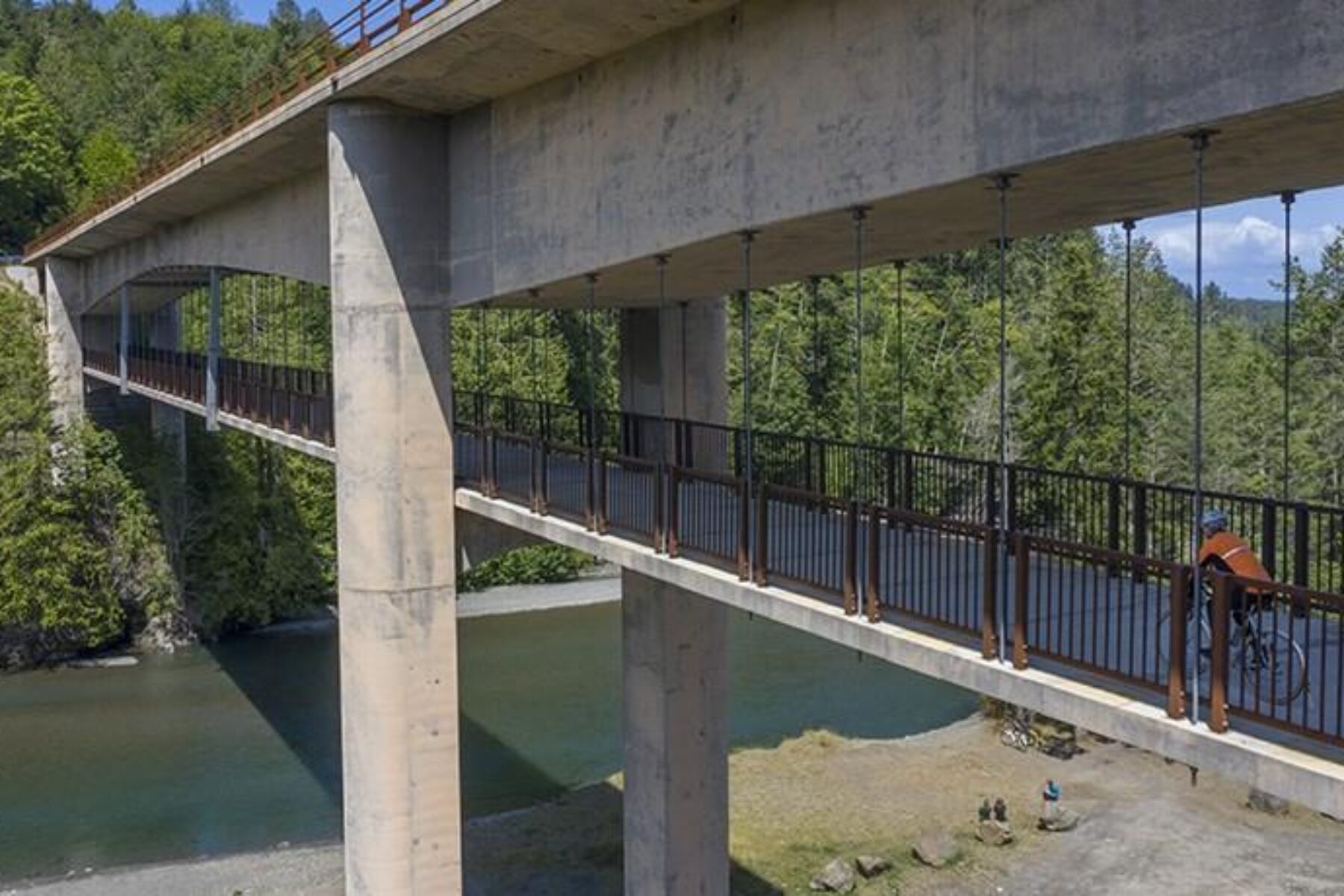
In February 2021, the Jamestown S’Klallam Tribe in Washington State won a key court decision that paved the way for the development of a medication-assisted treatment facility in the Olympic Peninsula community of Sequim. This facility—the Jamestown S’Klallam Healing Clinic—was not without detractors. While many supporters of the project emphasized the need to provide healing for people suffering from addiction, there was also opposition that raised concerns about its location and its impact on property values and safety.
To longtime Jamestown S’Klallam Tribe Chairman W. Ron Allen, the debate about the Healing Clinic shared some similar traits with a region-wide project that had its share of doubters at the outset, but now has wide-ranging support across the 14 jurisdictions it crosses, the Olympic Discovery Trail.
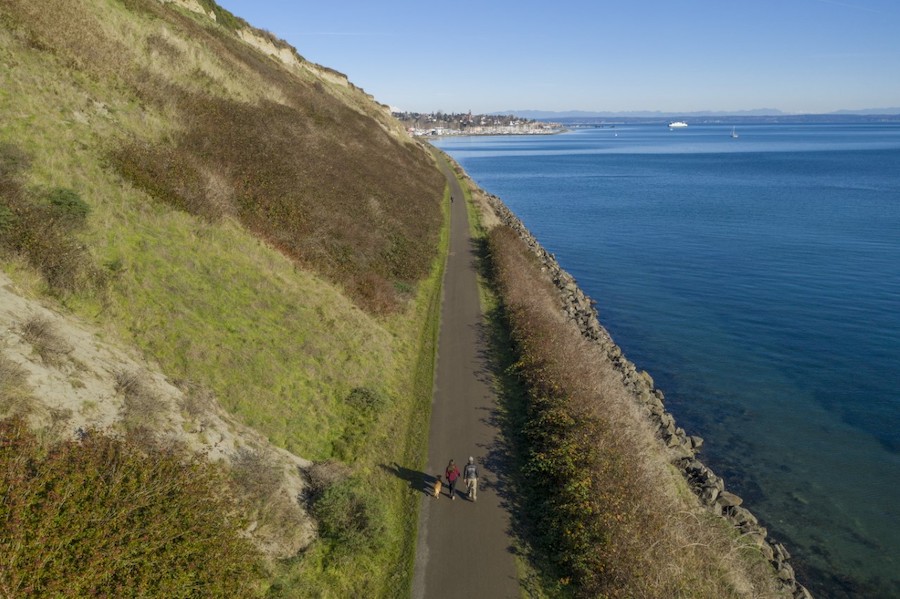
“They have very common threads of experience,” Allen said. “Because you’re bringing often conflicting interests together to make a vision come to reality. It is something bigger than you. It’s something bigger than your generation. And it’s driven by people who see beyond themselves and beyond their generation. That requires patience, persistence, dedication and respect to make it happen.”
In the case of the clinic, Allen said, the goal is to heal people. The ODT, he said, helps residents and visitors achieve different, but similarly lofty, goals.
“For the Discovery Trail, it’s making them healthy,” he said. “It’s raising their spirits and their appreciation of what we have, what kinds of gifts that God or the Great Spirit provided to us, and we get to enjoy in our backyard. You don’t have to go to Italy to see wonders.”
Eventually stretching from Puget Sound to the Pacific Ocean, the Olympic Discovery Trail (ODT) is a showcase of some of the most renowned cultural and natural assets on the North Olympic Peninsula.
Olympic Discovery Trail
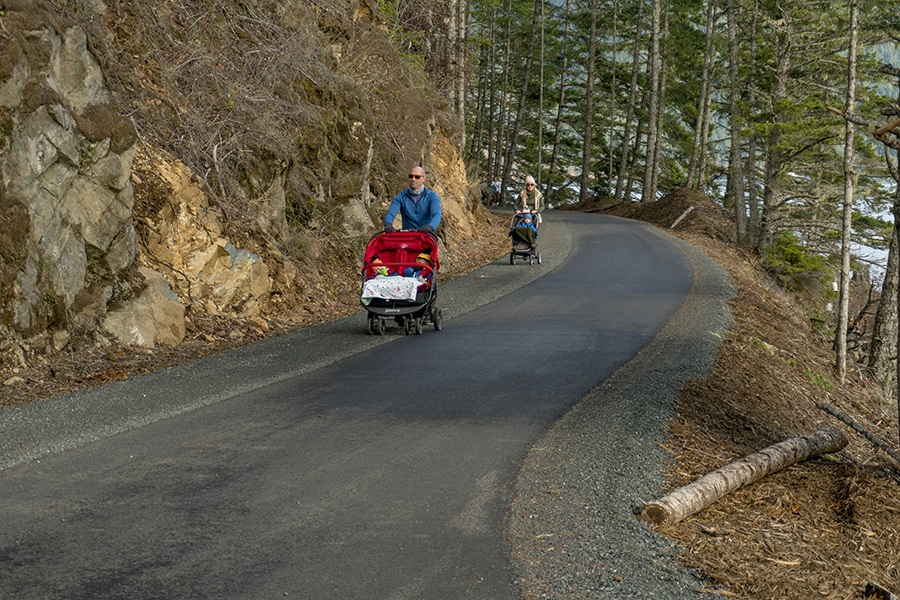
Length: 135 miles
Counties: Clallam, Jefferson
Endpoints: Currently in four separate segments, the trail will eventually stretch from Port Townsend to La Push.
Trail Uses: Walking, biking, wheelchair accessible, inline skating, horseback riding, mountain biking, fishing
To view a map of the developing sections of the Olympic Discovery Trail and access loads of other trip-planning information, including waypoints, go to TrailLink.com™.
$110 MILLION
Estimated annual economic + environmental benefits of conserved lands, trails and parks in the North Olympic Peninsula
$616 MILLION
Estimated annual increase in home values by conserved farms, forests and trails in Clallam, Jefferson and Kitsap counties
962
Estimated no. of people employed by 80 outdoor recreation businesses in the North Olympic Peninsula (as of January 2021)
A History That Dates Long Past the Railroad Era
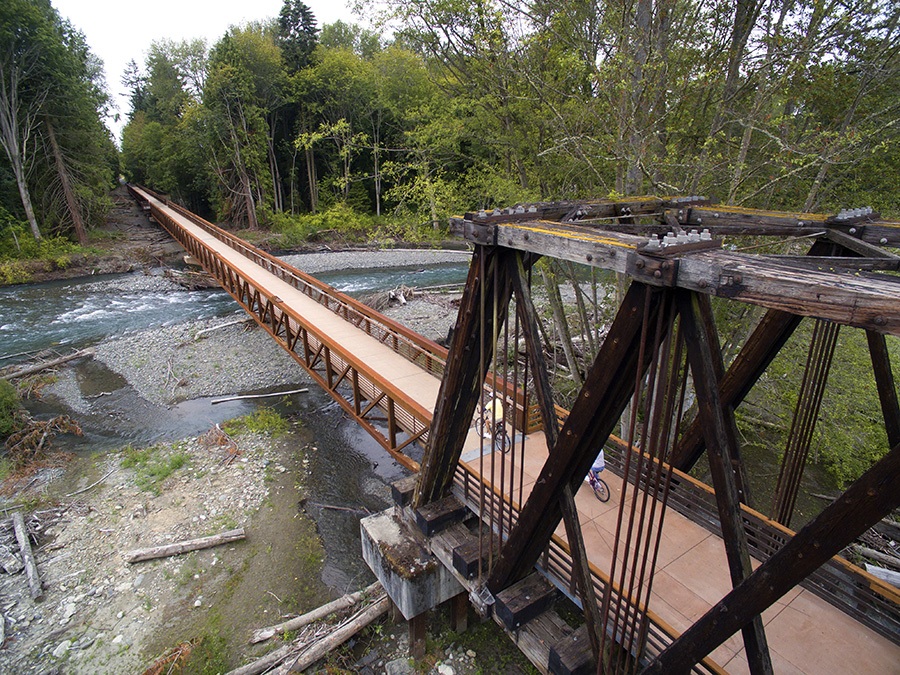
As of March, about 92 miles of the ODT’s 135-mile path are completed, said Jeff Bohman, longtime president of the Peninsula Trails Coalition, or PTC. Several projects are currently or soon to be underway to chisel down the remaining miles of protected trail left to build.
The PTC is a nonprofit that collaborates with the collection of tribal, federal, state, county, city and park entities that own, fund and maintain portions of the ODT across a path that showcases cultural, historical, natural and recreational highlights of the Olympic Peninsula in Jefferson and Clallam counties. As more of the ODT gets developed, bicyclists are less dependent on the shoulder of U.S. 101, the major highway that snakes along the peninsula. Talk to someone who has biked miles on ‘the 101’ as local residents call it, and you will likely hear about a heart-rate spike caused by a passing logging truck.
Timber drove construction of the railroad lines that much of the ODT now traces, but it took decades of failed attempts to lay down much of the track.
“The peninsula’s early economy was built almost entirely on felling trees, milling the lumber, and getting it to market, all made more challenging by remoteness and the difficulties of transportation,” John Caldbick wrote for HistoryLink.org, a nonprofit encyclopedia of Washington history. In the 1800s, the burgeoning logging industry drew thousands of Americans and immigrants to the region. Their presence displaced Native Americans who had lived along the shore of the Strait of Juan de Fuca for thousands of years, or as tribes with land along the ODT say, since time immemorial.
Nine Olympic Peninsula tribes—the Elwha Klallam, Jamestown S’Klallam, Port Gamble S’Klallam, Skokomish, Squaxin Island, Quinault, Hoh, Quileute and Makah—signed treaties in the 1850s to cede land for smaller reservations, the Olympic Peninsula Intertribal Cultural Advisory Committee writes in the book, “Native Peoples of the Olympic Peninsula: Who We Are.”
The thousands of outsiders who moved to the region and settled in towns like Port Townsend and Port Angeles banked on connecting the peninsula to the Transcontinental Railroad, Caldbick wrote, but Tacoma became the western terminus, and the peninsula settled for short-line freight and passenger segments. After changing numerous hands, the railroad was decommissioned in the mid-1980s. Portions of what was once known as the Seattle, Port Angeles & Western Railway make up ODT segments from Port Angeles to Port Townsend.
Modest Railroad, Spectacular Trail
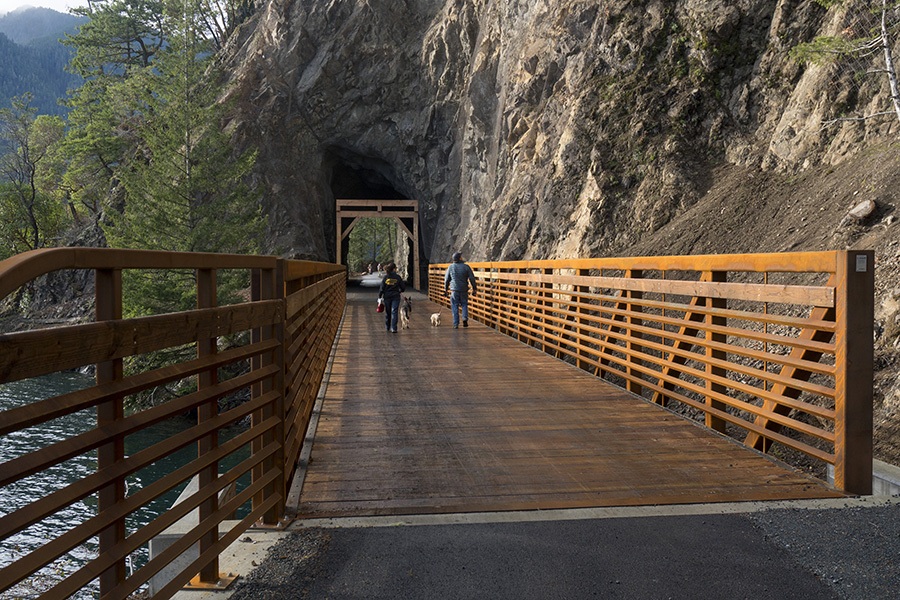
The idea for the ODT developed in the late 1980s, when three cyclists founded the PTC. The goal was to use the recently abandoned railroad corridor as a path from Port Townsend on Puget Sound, west to Forks. Later efforts extended the ideal path out to La Push on the Pacific shore. A few sections of the abandoned railroad sold before support for a fully connected ODT developed, but there were early victories too, including the 1991 preservation of a trestle and bridge that crosses the Dungeness River, a part of property now owned by the Jamestown S’Klallam Tribe.
The Jamestown S’Klallam Tribe operates a variety of businesses, centers and services, including a hotel resort that features a casino and golf course, the Longhouse Market and Deli, health and dental clinics, and the Dungeness River Audubon Center at Railroad Bridge Park. Each of these is either on the ODT or within sight of it.
Allen said that the tribe had different plans for the railroad corridor when it first began acquiring easements of it in the 1990s. Along with bridging the gap that the railway created through the Jamestown S’Klallam Campus, it also filled some missing pieces of a housing development plan. But Clallam County officials approached the tribe’s then-Chief Operating Officer, Annette Nesse, and proposed linking the segments with the developing ODT. Now, Allen said, the Olympic Discovery Trail is a part of the Jamestown S’Klallam Tribe’s identity.
“We see ourselves as partners now in making this vision happen,” he said. “That’s why it made it easier for us to make a commitment and dedicate the property for (the trail).”
Bohman said that the rail-trail concept was, like with many regional trails, initially met with resistance from a number of property owners and real estate developers, but support for the ODT has grown widespread. “We have major remaining pieces actively in process where we are collaborating with counties and other jurisdictions, and now the resistance that we would experience in the early years is pretty fully turned around,” he said.
An Eye-Pleasing Start, or Finish, to the Great American Rail-Trail
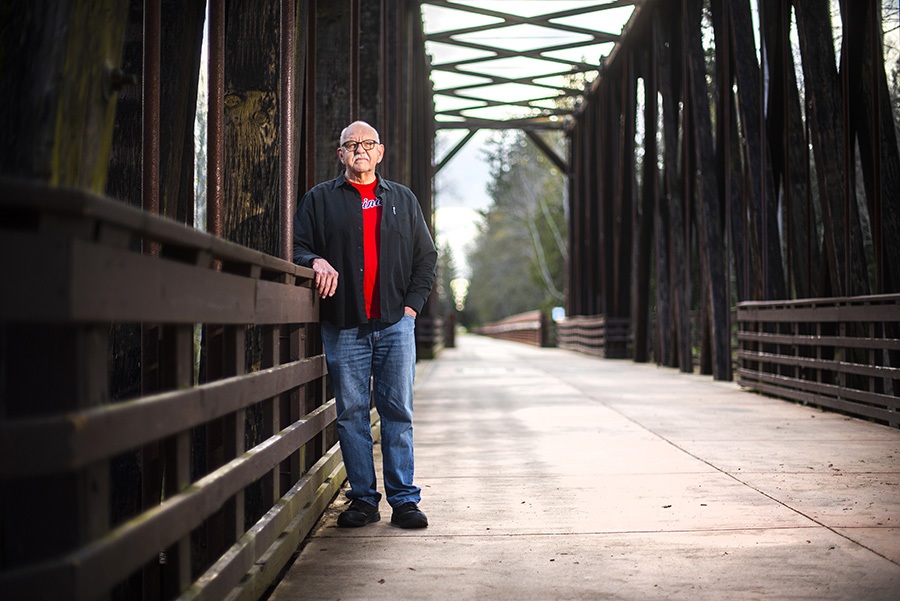
Depending on which direction you take, the ODT is either the starting line or finish line for the Great American Rail-Trail™, a developing 3,700-mile cross-country trail connecting Washington State and Washington, D.C. Either way, Bohman said, being a terminus for the Great American is a coup for a region that prides itself on being an outdoor recreation destination.
“Being a part of the Great American Rail-Trail is hugely consequential for us,” he said.
Ocean, bays, rivers, forests, mountains, seaside towns, tribal communities, Canada, a sea, a sound and a lake so deep it can submerge the Space Needle are among the sights along the ODT. And if that’s not enough, so many lavender fields blossom across the region in the summer months that Sequim holds an annual festival to celebrate them.
In Port Townsend, the ODT begins at the boatyard and runs for 7.3 protected miles on Jefferson County’s Larry Scott Trail, named in memory of one of the founding PTC members. At its westernmost point, in La Push, the Quileute Tribe owns a little over a mile of wide, paved trail next to the Pacific Ocean, a section that’s set to connect to Forks thanks to a recently approved 13-mile trail project. In between, trail users experience a variety of landscapes.
Sequim, in the shadow of the Olympic Mountains, gets about 16 inches of rain annually, while the western side of Olympic National Park gets about 12 feet of rain over the same period. The Dungeness Valley, Allen said, offers a real country feel. The trail runs along the waterfront through much of Port Angeles and crosses streams and rivers, sometimes in dramatic fashion. The Elwha River Bridge, which provides a pedestrian-only lower deck across the undammed river, “is one of the crowning jewels of the whole trail,” said Lower Elwha Tribe GIS Manager and Port Angeles Active Transportation Advocacy Founder Randall McCoy.
Olympic National Park is home to the most recent major ODT piece, the 10-mile Spruce Railroad Trail. The newly paved, ADA-compliant path takes users through tunnels and over bridges as it runs alongside the seemingly bottomless Crescent Lake.
“Right away, people were out there using the trail,” said Penny Wagner, Olympic National Park public affairs officer. “Not just bicyclists, but hikers and people out there with their dogs. Especially this year with the pandemic, being able to open that up and provide another place for our communities to get out and exercise, and be outside and enjoy the benefits of recreating outdoors, was a big deal.”
An Economic Driver in the ‘Land of Sea to Sky’
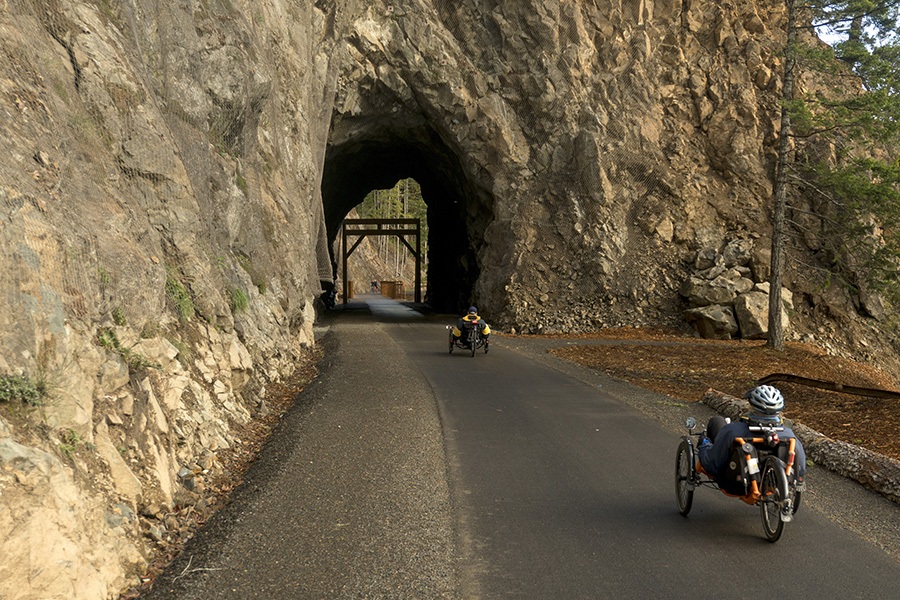
As the 100-room, five-story 7 Cedars Hotel neared its grand opening last August, Allen said that the management had an amenity on its mind to offer prospective guests.
“The first thing they did was buy a bunch of electric bikes,” he said. “People who don’t want to pump their way up a steep hill, all they have to do is turn the electric system on and go up right over the hills.”
Allen said that proximity of the ODT to Jamestown S’Klallam properties is an image enhancer and a tourist draw. Trail users who pass by the 7 Cedars on the ODT are greeted by a collection of totem poles, including the latest addition, the 42-foot “Welcome to the Land of Sea to Sky.” Dozens can be found on tribal lands and outside nearby destinations like the Northwest Maritime Center in Port Townsend, where a Supernatural Carpenter atop a donated totem pole honors the region’s extensive boatbuilding and woodworking history. There are so many, that Ben’s Bikes in Sequim offers a map to bike renters that provides directions to over 45 of them.
Shop owner Sam Chandler said the shop often delivers rentals directly to the area’s numerous bed-and-breakfasts. This year, the shop’s rental fleet is entirely e-bikes. “It really fits the type of riding that those folks are wanting to do in order to tour the countryside and see what is a very historical community,” he said. “You’ve got old barns here, you’ve got the lavender fields, you’ve got extraordinary views.”
Along with e-bikes, Chandler said that recumbents are particularly popular for retirees like him who, he said, often buy a house in Sequim first, and a bike second. He estimated that he has sold 350 of them.
“The trail is clearly a driver of that,” he said.
Ben’s Bikes is one of 80 outdoor recreation businesses in the North Olympic Peninsula three-county area (Clallam, Jefferson and Kitsap), according to a January 2021 report by the Trust for Public Land that sought to quantify the economic and environmental benefits of conserved lands, trails and parks. Those businesses employ 962 people and generate $110 million annually. The report also stated that conserved farms, forests, trails and parks increased home values by roughly $616 million and increased property tax revenues by over $6.1 million annually.
While it does not quantify the direct economic impact of the ODT, it did offer the trail as a case study, saying that it is a recreation destination that draws new residents and tourists to the area. In the study, Chandler said he wouldn’t have opened Ben’s Bikes if not for the ODT, which sits about 300 feet from the storefront.
A Path to Discover All That the Olympic Peninsula Offers
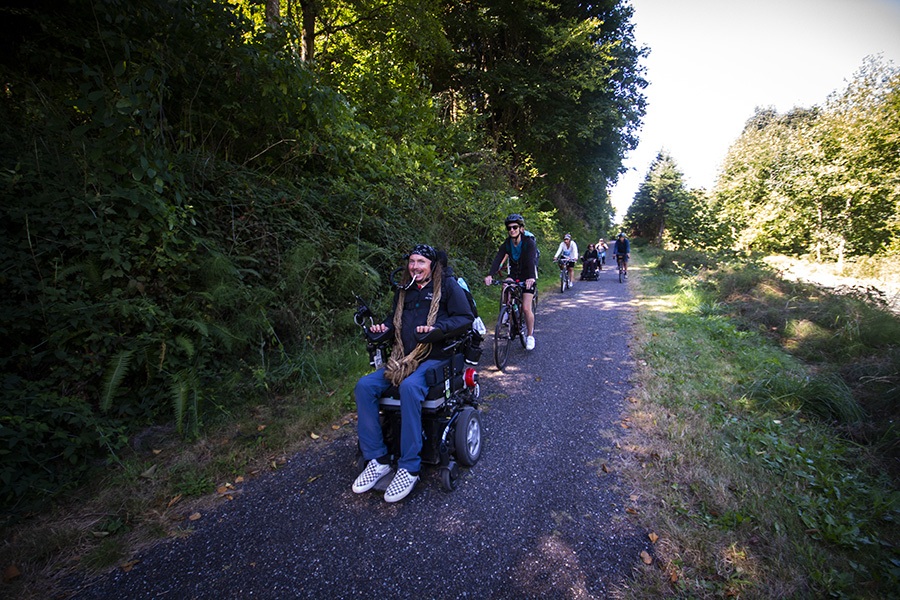
During a Zoom meeting with Randall McCoy and Matt Beirne, natural resources director for the Lower Elwha Tribe, McCoy gave a GIS (geographic information systems)-mapped tour of the ODT, pointing out straightaways, favorite routes, his regular commute to work and a handful of steeper slopes in an area where the mountains meet the sea. (The ODT website has a running list of sections that are ADA compliant.) A big-time Strava user, McCoy also pulled up a heat map that showed where riders were using the ODT. The Port Angeles Waterfront Trail, a popular section of the ODT, was blazing.
Along the waterfront, the trail connects to a path that takes users most of the way out on Ediz Hook, a 3-mile-long, crescent-shaped sand spit that offers panoramic views of the Olympic Mountains and close encounters with marine wildlife.
“I like to ride out on these piers,” McCoy said as he zoomed in on Ediz Hook. “Sometimes there will be a sea lion or otters out there. You just get this amazing view. It’s just beautiful to go out there.”
The size and scope of the ODT means the trail is utilized for relay races, marathons, bike tours and the like. But like the connection to Ediz Hook, the ODT also serves as a link to a broader outdoor recreation-driven region. The Olympic Adventure Trail, a 25-mile singletrack and doubletrack offshoot of the ODT, winds mountain bikers, backcountry runners and equestrians through the Elwha Valley west to, eventually, the Spruce Railroad Trail.
Across the peninsula, kayaking and canoeing are elemental activities. Olympic National Park offers world-class backpacking. Hurricane Ridge challenges cyclists to climb just under a mile in elevation over a 17.9-mile ride, and rewards those who do with Olympic Mountain views. (Starting in Port Angeles, rather than at the base of Hurricane Ridge, makes it an 80-mile round trip challenge.)
In Port Townsend, the ODT is a jumping-off point to explore the čičməhán Trail, which offers 18 interpretive signs that tell stories about the S’Klallam people, including čičməhán (Cheech-ma-han), a leader who negotiated with settlers and the U.S. government to sustain S’Klallam lifeways.
A String That Holds the Region’s Pearls
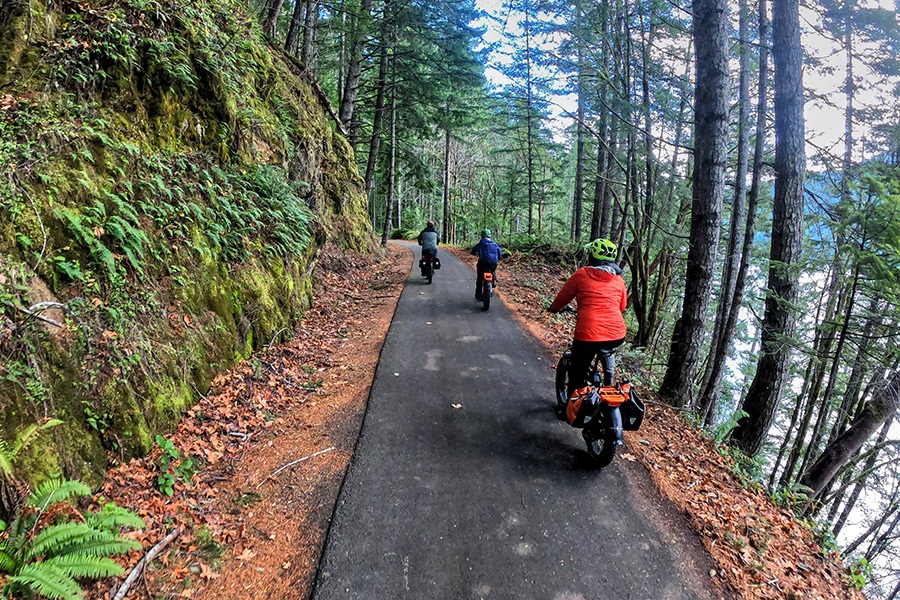
The latest rankings by the League of American Bicyclists place Washington No. 1 overall among bike-friendly states. Credit for that belongs in part to a region-wide effort across the Olympic Peninsula to apply for and earn Bicycle Friendly Community (BFC) status. Sequim, Port Townsend, Port Angeles/Clallam County and the Jamestown S’Klallam Tribe have all achieved bronze or better rankings. The tribe was the first in the United States to both apply for and receive the designation.
Annette Nesse, now the tribe’s transportation program manager, said that the region-wide applications were a coordinated effort. In the tribe’s application, Nesse highlighted the protected path offered on the ODT and a transportation budget that has increased from about $5,000 annually to six figures these days, with a high percentage dedicated to nonmotorized transit.
Allen said that the tribe wants to eventually add lighting to trail segments, but first wants to continue working with Clallam County to close the ODT gaps in between the five segments it owns. Meanwhile, he credited Nesse, a cyclist and equestrian, for encouraging other tribe employees to take advantage of the ODT as a commuter option.
“We over the years have developed quite the bicycling-to-work community,” he said. “We even developed some bike racks and places to be able to store their bikes when they show up at the office, because we wanted to protect their investment. For us, it doesn’t matter whether you’re bicycling or running or walking. To have a safe place to do that is a huge objective of the tribe.”
At the same time the Jamestown S’Klallam Tribe was applying for its first bike-friendly designation, Lower Elwha Klallam leadership contributed to the Port Angeles/Clallam County effort to achieve the status. In a December 2014 letter to the Port Angeles Forward Committee, Lower Elwha Klallam Chairwoman Frances G. Charles wrote that receiving BFC status “will confirm the commitment to bicycling in our community for physical exercise, family recreation and [commuting] to work, school and shopping.” And it would also serve as a draw for active-minded tourists that showcases the “region’s incredible bicycling assets for the serious, as well as the casual, bicycle tourist.”
She cited the ODT specifically.
“This trail traverses through the Elwha Valley and portions of tribal lands,” Charles wrote. “The ODT will be like the string that contains BFC pearls.”
This article was originally published in the Spring 2021 issue of Rails to Trails magazine. It has been reposted here in an edited format. Subscribe to read more articles about remarkable rail-trails and trail-networks while also supporting our work.

Donate
Everyone deserves access to safe ways to walk, bike, and be active outdoors.